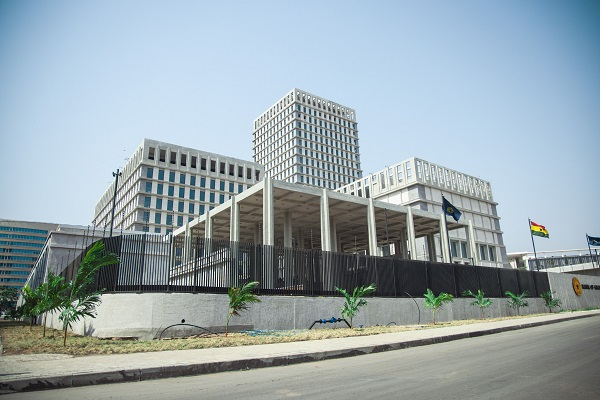Global Biosimulation Market Set to Soar to USD 20.9 Billion by 2032, Revolutionizing Drug Development and Prec
The global biosimulation market, valued at approximately USD 3.1 billion in 2022, is on track to experience significant growth over the next decade. Projected to expand at a compound annual growth rate (CAGR) of 21.5%, the market is expected to reach a remarkable valuation of USD 20.9 billion by 2032. This rapid expansion reflects the increasing demand for advanced drug development processes, driven by the rise of complex diseases, personalized medicine, and the growing emphasis on precision healthcare.
Biosimulation, the process of using sophisticated computer models to simulate biological processes, has emerged as a game-changer in the pharmaceutical and biotechnology industries. This technology enables drug developers to predict how new drugs will behave in the human body, offering insights that were previously difficult or impossible to attain through traditional methods. As diseases continue to evolve and become more complex, the need for innovative drug development tools like biosimulation is becoming more urgent.
The ability to predict drug interactions, effectiveness, and safety profiles without conducting extensive physical trials is a critical advantage for pharmaceutical companies. This not only accelerates the time it takes to bring new treatments to market but also reduces development costs, making drugs more affordable and accessible for patients.
The increasing focus on precision medicine, which tailors medical treatments to individual patients based on their genetic makeup, is fueling the demand for biosimulation solutions. With personalized therapies expected to become a cornerstone of future healthcare, biosimulation technologies are well-positioned to support the development of treatments that are specifically tailored to each patient’s needs.
The growth of the biosimulation market is largely driven by the mounting challenges faced by the global healthcare sector. The rise in chronic diseases, the aging population, and the emergence of new and evolving diseases are placing an increasing burden on healthcare systems worldwide. Biosimulation offers a solution by accelerating drug discovery, optimizing clinical trials, and enabling more precise drug formulations, thus helping to address these challenges.
Moreover, advancements in computational biology and artificial intelligence (AI) are enhancing the power and accuracy of biosimulation tools. These innovations are expected to drive even greater efficiency in drug discovery processes, opening up new opportunities for pharmaceutical companies to develop novel treatments. Investments in healthcare R&D are also increasing, with governments and private organizations recognizing the importance of supporting technologies that can expedite the development of life-saving drugs. As a result, biosimulation is becoming an integral part of the drug development process, shaping the future of medical science and revolutionizing the pharmaceutical industry.
The biosimulation market is not only growing globally but also exhibiting strong regional performance, with key markets such as the United States, China, the United Kingdom, and Japan set to see significant growth.
The U.S. is poised to be a dominant player in the global biosimulation market. With a robust healthcare infrastructure, favorable government policies, and high healthcare spending, the U.S. is well-positioned to leverage biosimulation technologies to address a range of medical challenges. The growing prevalence of chronic diseases such as diabetes, heart disease, and cancer is driving the demand for faster and more efficient drug development. The U.S. biosimulation market is expected to reach USD 8.7 billion by 2032, making it the largest market globally.
China is rapidly emerging as a key player in the biosimulation market, thanks to the government’s strong focus on advancing pharmaceutical innovation and improving healthcare capabilities. With the nation’s growing investment in biotechnology and pharmaceuticals, biosimulation is gaining traction as a crucial tool for drug development. By 2032, the Chinese market for biosimulation is expected to reach USD 1.7 billion, driven by supportive policies and an expanding pharmaceutical sector.
The United Kingdom is experiencing significant growth in the biosimulation market, driven by its world-class pharmaceutical industry and strong focus on research and development. The UK’s biosimulation market is expected to reach USD 880 million by 2032, with a projected CAGR of 20.6%. This growth is bolstered by the country’s commitment to advancing scientific research, making it a key player in the European biosimulation landscape.
Japan’s biosimulation market is set for substantial growth, expected to reach USD 1.2 billion by 2032. The country’s emphasis on cutting-edge technologies and advancements in biotechnology is creating a favorable environment for the growth of biosimulation. Japan’s biosimulation market is projected to grow at a robust CAGR of 25.1%, with a total dollar opportunity of USD 1.1 billion, reflecting its rapid adoption of this technology.
The biosimulation market is highly competitive, with several prominent players leading the charge in developing and commercializing biosimulation software and services. Key players in the market include:
Recent developments from leading biosimulation companies highlight the increasing sophistication of this technology. For example, in June 2022, Certara launched an upgraded version of its biosimulation software, incorporating advanced simulators for immunogenicity, immuno-oncology, and vaccine development. This new version is designed to predict drug behavior and answer critical questions related to biologic therapies.
Similarly, Genedata AG’s Genedata Profiler platform has been selected by Syros Pharmaceuticals to accelerate its translational research initiatives. These advancements are paving the way for a new era in drug development, where precision and speed are paramount.
The biosimulation market can be segmented by product type, deployment mode, and end-use applications. Key market segments include:
These segments highlight the diverse applications of biosimulation, which is being used across the entire drug development lifecycle, from discovery to regulatory approval.
The global biosimulation market is poised for exceptional growth, driven by the increasing demand for efficient, cost-effective, and precise drug development processes. As healthcare challenges continue to grow, the ability to simulate biological processes will become more essential than ever before. The expansion of biosimulation technologies is set to revolutionize the pharmaceutical industry, improving drug development timelines and ultimately enhancing patient outcomes. With significant investments in research, development, and technology, the biosimulation market will continue to evolve, offering new opportunities for innovation in medical science.
Future Market Insights, Inc. (ESOMAR certified, recipient of the Stevie Award, and a member of the Greater New York Chamber of Commerce) offers profound insights into the driving factors that are boosting demand in the market. FMI stands as the leading global provider of market intelligence, advisory services, consulting, and events for the Packaging, Food and Beverage, Consumer Technology, Healthcare, Industrial, and Chemicals markets. With a vast team of over 400 analysts worldwide, FMI provides global, regional, and local expertise on diverse domains and industry trends across more than 110 countries.
Future Market Insights Inc.
Christiana Corporate, 200 Continental Drive,
Suite 401, Newark, Delaware – 19713, USA
T: +1-347-918-3531[email protected]
Website: https://www.futuremarketinsights.com
LinkedIn| Twitter| Blogs | YouTube










